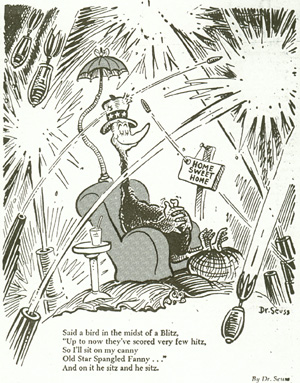Whether “PM” stood for “P.M.” (it was ostensibly an afternoon paper, though its first editions came out in the A.M.) or “Picture Magazine” (it pioneered the use of photographs to convey information) no one knows for sure. We do know that it used color long before any other paper, employed the latest technology to print photographs with far greater clarity than its competitors, was a consumer advocate when no other newspapers were, and accepted no advertising during its first six and a half years. Ralph Ingersoll, former editor for the New Yorker (1925-30), Fortune (1930-35), and Time (1936-39), founded PM as an alternative to the generally conservative New York newspapers. PM was proudly anti-Poll Tax, anti-Fascist, and a supporter of Roosevelt. Published on June 18, 1940, PM‘s first issue expressed his goals most succinctly:
PM is against people who push other people around.
PM accepts no advertising.
PM belongs to no political party.
PM is absolutely free and uncensored.
PM‘s sole source of income is its readers — to whom it alone is responsible.PM is one newspaper that can and dares to tell the truth.
PM‘s bold mission attracted some of the best photojournalists, writers, and artists, including the left-leaning journalist I.F. Stone, novelists Ernest Hemingway and Erskine Caldwell, future Speaker of the House Tip O’Neill, photographers Margaret Bourke-White and Arthur Fellig (better known as “Weegee”), cartoonist Carl Rose, and Dr. Seuss.
In 1941, Dr. Seuss (the pen name of Theodor Seuss Geisel) was concerned about the rapidly expanding world war: though a majority of Americans opposed intervention in what they considered a foreign war, Seuss was not only in favor of aiding Britain, but saw that war with Nazi Germany would be inevitable. At first unable to find a newspaper to publish his political advice, he met up with an old friend who happened to be working for PM. It proved to be the perfect paper in which to air his views, for not only did PM favor American intervention, it seemed to relish controversy. From April 1941 to January 1943, Seuss contributed cartoons — sometimes as many as five per week — like this one:
Said a bird in the midst of a Blitz,
“Up to now they’ve scored very few hitz,
So I’ll sit on my canny
Old Star Spangled Fanny . . .”
And on it he sitz and he sitz.
The poetry may not sparkle like that of his children’s books, but its cadences are certainly Seussian and its message is unmistakably anti-Isolationist.
Crockett Johnson, another artist who would later become famous for his children’s books, had been looking for a newspaper to publish “Barnaby.” After he showed the strip to Hannah Baker (PM‘s comics editor), the upstart daily took a chance: “Barnaby” made its debut in April 1942, and quickly became one of the paper’s most popular features.
By September 1944, the strip was in 31 U.S. Newspapers, including the Baltimore Evening Sun, the Philadelphia Record, the Chicago Sun, and the St. Louis Star-Times. At the height of its popularity, “Barnaby” was syndicated in 52 American newspapers (with a combined circulation of nearly 5,600,000).
Irrespective of phenomenal successes like “Barnaby,” first-rate investigative journalism, and innovative design, PM consistently lost money. After eight years of underwriting the unprofitable paper, Marshall Field III sold PM to Bartley Crum on May 1, 1948. The last issue of PM appeared on June 22, 1948. On June 23, it was replaced by the New York Star, which ceased publication on January 28, 1949. In May, Ted Thackeray began publishing the Daily Compass on PM‘s presses; though generally consistent with PM’s politics, the Daily Compass folded in 1953.
Sources
“Cushlamochree!” Newsweek 4 Oct. 1942: 102, 104.
Hoopes, Roy. Ralph Ingersoll: A Biography. New York: Atheneum, 1985. All about the man who founded PM, but not the first book to consult (start with Milkman’s history of the paper).
Margolick, David. “PM’s Impossible Dream.” Vanity Fair January 1999: 116-132. A concise, well-written history of PM, including a number of great photographs. Recommended.
Milkman, Paul. PM: A New Deal in Journalism, 1940-1948. New Brunswick, NJ: Rutgers University Press, 1997. The definitive history of the newspaper: highly recommended.
“O’Malley for Dewey.” Time 18 Sept. 1944: 50.
Webpages that Mention PM
Note: Since The Crockett Johnson Homepage is now an archival site, these links almost certainly will not work. If you want to see what was there, try inserting the link into the Wayback Machine.
- Dr. Seuss Went to War, a catalog of Seuss’s World War II cartoons (Mandeville Special Collections Library, UC San Diego)
- Lillian Hellman’s FBI file (at UPenn’s The American 1950’s)
- The James D. Mooney Papers: Collection Description (at Georgetown University)
- George S. Patton Papers (at the University of North Dakota)
- “Superman Verus the KKK” by Richard von Busack (at MetroActive)
- Yale University Library Research Guide in Gay and Lesbian Studies





